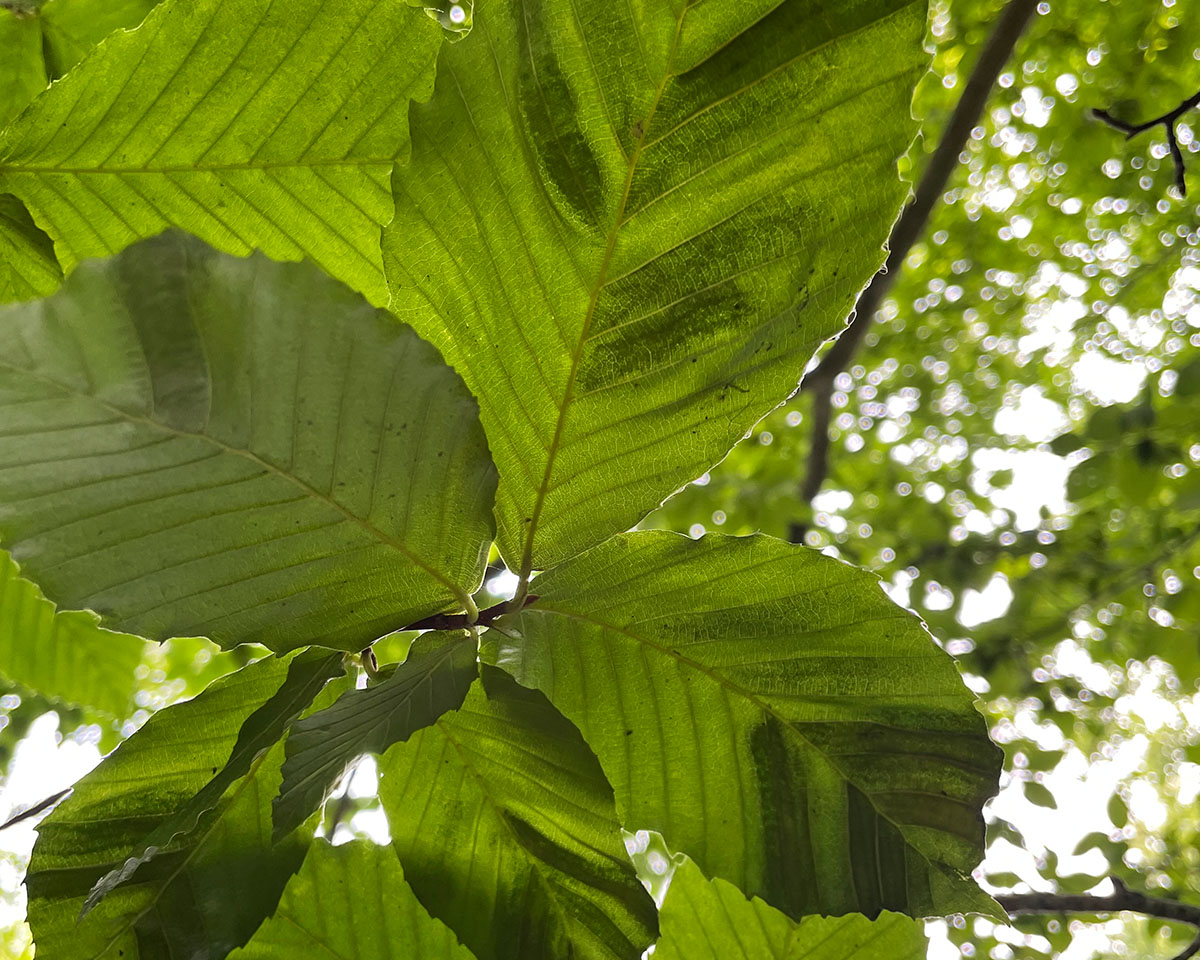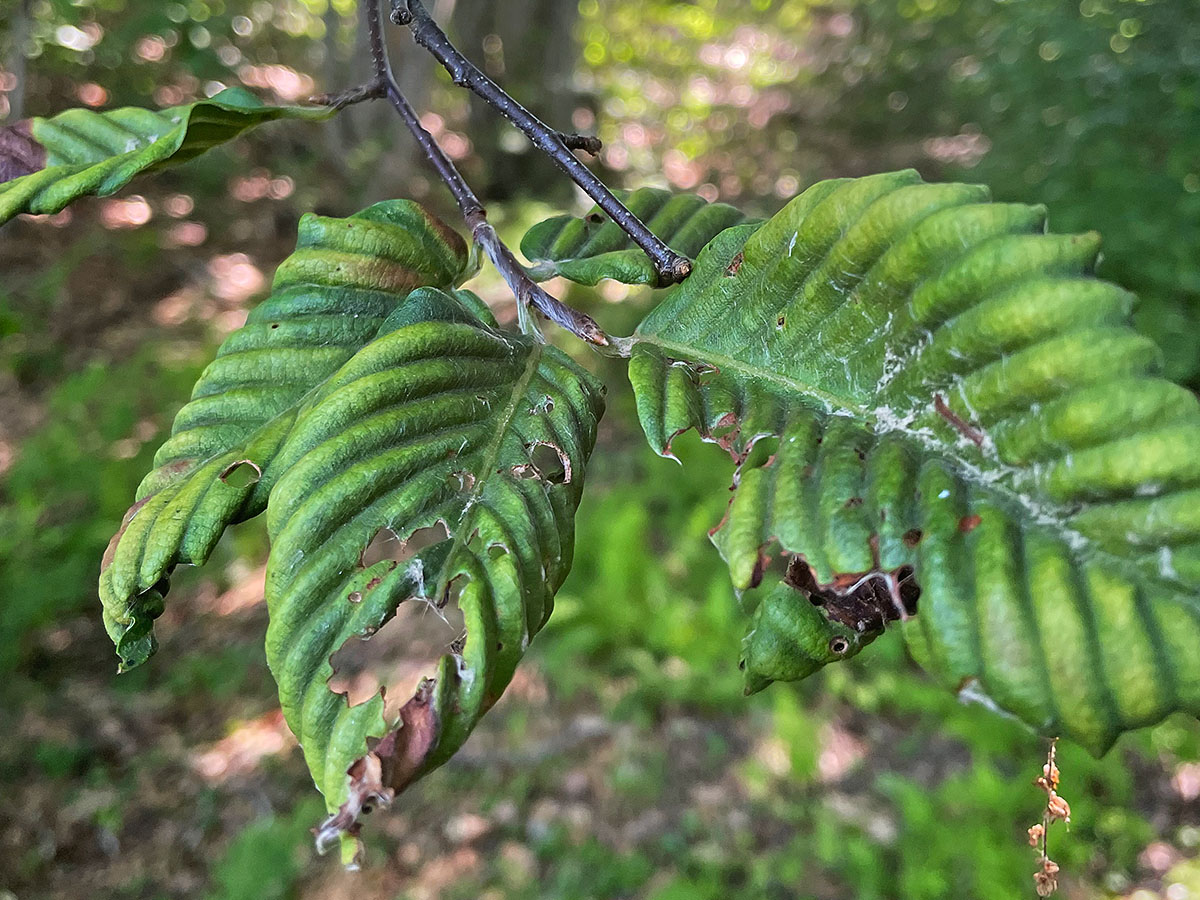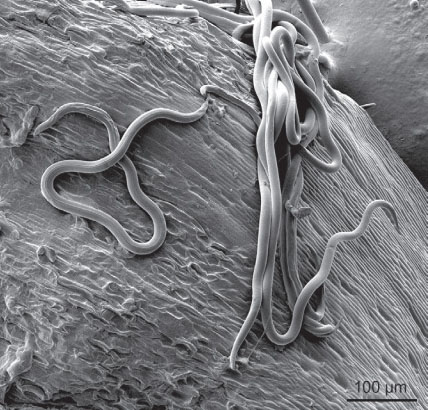These century-old beech trees are dying. (But there is hope for a remedy.)
Beech leaf disease (BLD) was first recognized in Ohio in 2012. American and European beech trees in the areas around New York City, western Connecticut, and Long Island, including Suffolk County, were showing the symptoms of BLD as early as 2019. If you stand below a leafy branch and look upwards to silhouette the leaves against the sun, you can see for yourself the abnormal gallery of shadowy bands within the leaves.

Beech leaves showing shadowy bands that are a sign of Beach leaf disease. Photo by Jack Schneider
These trees are infected with a tiny, exotic, worm-like nematode. As the severity of the disease advances, the leaves curl and turn brittle and brown. Since this disease is a relatively recent discovery, much about it, including mode of transmission, pathology, and cure, remains unknown. Understanding and combating the disease has become a priority for forest managers, plant disease researchers, and other scientists, as beech trees are critically important for providing food and habitat that sustains a wide range of wildlife.

Beech leaves showing signs of severe Beech leaf disease. Photo by Jack Schneider
Researchers are finding that an annual application of a special fertilizer reduces the number of nematodes and improves the health of the trees. Left untreated, the trees and these groves will die in three to seven years.
If you would like to help to save these groves, please contact the Museum.


